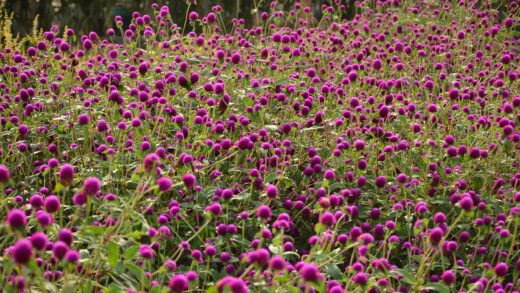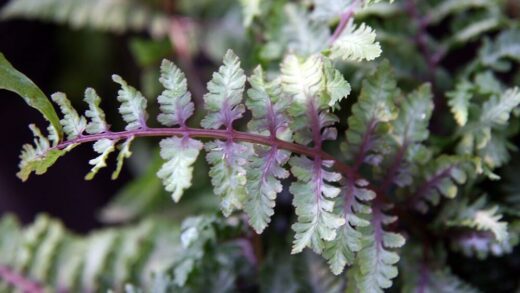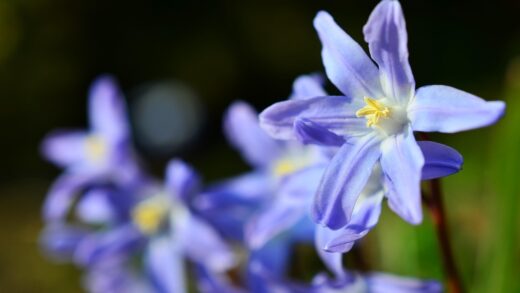Understanding the specific water needs of the wood anemone is fundamental to its successful cultivation, as its entire life cycle is intricately linked to the moisture patterns of its native woodland habitat. This delicate spring ephemeral demands a careful balance, requiring consistently moist conditions during its active growth phase, followed by a much drier period during its summer dormancy. Providing the right amount of water at the right time is not merely a task but an art that involves observing the plant’s signals and responding to the prevailing environmental conditions. Mismanaging irrigation is one of the most common reasons for the failure of these plants in a garden setting, either through desiccation during spring growth or rot during summer rest. Therefore, a nuanced approach to watering is essential for a thriving and perennial display.
During the spring, from the moment the first shoots push through the soil until the foliage begins to yellow after flowering, the wood anemone is in its period of most active growth. This is when it requires a reliable and consistent supply of moisture. The soil should be kept evenly moist, akin to a well-wrung-out sponge, but never saturated or waterlogged. In a natural woodland, this moisture is supplied by melting snow and regular spring rains, which keep the humus-rich topsoil damp. In a garden, we must replicate these conditions, providing supplemental water whenever natural rainfall is insufficient to maintain this level of moisture.
The importance of this springtime moisture cannot be overstated. It is during this period that the plant is not only producing its beautiful flowers but also photosynthesizing intensively to create and store the energy reserves in its rhizomes for the following year’s growth. If the plant experiences drought stress during this critical window, the foliage may wilt prematurely, the flowering display can be shortened, and, most critically, the rhizome will not be able to accumulate sufficient resources. This can lead to a significantly weaker plant and a poor floral display in subsequent years, or even the complete loss of the plant.
Conversely, as the days lengthen and temperatures rise in late spring and early summer, the plant’s water requirements change dramatically. The yellowing of the leaves is a natural signal that the plant is preparing for dormancy, a survival strategy to cope with the drier, shadier conditions on the summer forest floor. During this dormant phase, the rhizomes require much less moisture. In fact, keeping the soil too wet during the summer is highly detrimental and is a leading cause of the rhizomes rotting away beneath the ground. This transition in watering practice is a crucial element of successful long-term care.
The critical spring moisture period
The arrival of spring signals the awakening of the wood anemone, and this is when its demand for water is at its absolute peak. From the emergence of the first delicate shoots to the final fading of its star-like blossoms, the plant is in a phase of rapid growth and energy production. During these vital few months, the soil must be kept consistently and evenly moist. This consistent moisture fuels the development of the foliage and flowers and is essential for the process of photosynthesis. It is through this process that the plant manufactures the sugars that will be stored in its underground rhizomes, providing the energy for its survival and the subsequent year’s display.
More articles on this topic
The ideal soil condition during this period is damp to the touch but not waterlogged. A good analogy is a forest floor after a gentle spring rain – saturated with moisture yet still allowing for air to reach the roots. In gardens that experience regular spring rainfall, supplemental irrigation may not be necessary. However, during any dry spells, it is crucial for the gardener to intervene. A deep, thorough soaking once or twice a week is far more effective than light, frequent sprinkling. Deep watering encourages the roots to grow deeper into the soil profile, making the plant more resilient and less dependent on surface moisture.
Letting the soil dry out completely, even for a short period during this active growth phase, can have significant negative consequences. The plant may show signs of stress, such as wilting leaves and flowers, and the flowering period may be cut short. More importantly, drought stress inhibits the plant’s ability to photosynthesize effectively, meaning fewer energy reserves will be stored in the rhizome. This will inevitably lead to a weaker plant in the following season, with fewer flowers and less vigorous growth. Consistent moisture is the foundation of a healthy, multiplying colony of wood anemones.
Monitoring the soil is key. The simple act of feeling the soil with your fingers is the most reliable way to assess its moisture content. Do not rely on a fixed schedule, but rather on the actual needs of the plant and the conditions of your garden. Factors such as soil type, temperature, wind, and the amount of sun exposure will all influence how quickly the soil dries out. An attentive and responsive approach to watering during the critical spring period is one of the most important contributions a gardener can make to the health of these beautiful woodlanders.
Transitioning to summer dormancy
As the vibrant flush of spring gives way to the warmer, longer days of early summer, the wood anemone begins a natural and necessary transition into dormancy. This shift is visibly signaled by the gradual yellowing and withering of its foliage. This is not a sign of distress but rather an indication that the plant has completed its annual growth cycle and is preparing to rest. Critically, this change in the plant’s state is accompanied by a significant change in its water requirements. The gardener’s irrigation practices must adapt accordingly to respect this natural rhythm and ensure the plant’s long-term survival.
More articles on this topic
During its summer dormancy, the wood anemone’s metabolic activity slows down to a near standstill. The underground rhizome, which is now fully charged with stored energy, requires very little from the soil. The primary goal during this period is to prevent the rhizome from rotting. Excessively wet soil during the summer months is the single greatest threat to dormant wood anemones. The warm, moist conditions create a perfect breeding ground for fungal and bacterial pathogens that can attack and destroy the resting rhizomes. Therefore, supplemental watering should be significantly reduced or stopped altogether.
In most temperate climates, natural summer rainfall will provide more than enough moisture to keep the dormant rhizomes from completely desiccating. The mulch layer applied in the autumn will also help to conserve a minimal amount of soil moisture. It is important to resist the temptation to water the area just because other nearby summer-blooming plants may require it. If you must water adjacent plants, try to do so carefully, avoiding the area where the anemones are located. This is another reason why thoughtful companion planting is so important, grouping plants with similar water needs together.
The soil should be allowed to dry out to a certain extent. While you do not want it to become bone-dry and baked hard, a relatively dry summer resting period is what the plant is adapted to. In its natural woodland habitat, the dense canopy of leaves from the overhead trees intercepts much of the summer rain, and the trees’ own roots draw a great deal of moisture from the soil. By allowing the soil in your garden to become drier during the summer, you are accurately simulating these natural conditions and providing the ideal environment for the dormant rhizomes to rest undisturbed until the following spring.
The role of soil and mulch
The type of soil and the use of mulch play a pivotal role in managing the water needs of the wood anemone throughout the year. The ideal soil is one that is rich in organic matter, a characteristic that imparts a wonderful ability to both retain moisture and allow for good drainage. A soil that has been generously amended with leaf mould or compost acts like a sponge, soaking up water during spring rains or irrigation and holding it available for the plant’s roots. This moisture-retentive quality reduces the frequency with which you will need to provide supplemental water during the crucial spring growing season.
Simultaneously, the excellent structure provided by this high level of organic matter ensures that the soil does not become waterlogged. The large particles of decomposing organic material create air pockets within the soil, allowing excess water to drain away freely. This is particularly important during wet springs and is absolutely critical during the summer dormancy period. A well-draining soil is the best insurance against the rhizomes succumbing to rot when the plant is not actively taking up water. Therefore, proper soil preparation at the time of planting is a long-term investment in effective water management.
Mulching is another essential practice that directly impacts the plant’s water relations. Applying a two to three-inch layer of organic mulch, such as shredded leaves or fine bark, over the soil surface in autumn provides numerous benefits. During the spring, this mulch layer acts as a barrier, reducing the evaporation of moisture from the soil surface. This helps to keep the root zone consistently moist and cool, buffering the plant against the drying effects of sun and wind and further reducing the need for irrigation.
As the plant enters dormancy in the summer, the mulch continues to play a valuable role. While it helps conserve a baseline level of moisture, preventing the soil from becoming completely desiccated during prolonged dry spells, it also allows heavy summer downpours to percolate slowly into the soil rather than running off the surface. This creates a more stable and less extreme soil environment for the resting rhizomes. In essence, a well-prepared, humus-rich soil combined with a consistent practice of organic mulching creates a self-regulating system that helps to moderate soil moisture levels throughout the year, mirroring the conditions of the forest floor.
Special considerations for containers
Growing wood anemones in containers presents a unique set of challenges and requires a more vigilant approach to watering compared to growing them in the ground. The limited volume of soil in a pot or trough can dry out much more rapidly, especially on warm or windy spring days. This means that container-grown plants will almost certainly require more frequent watering during their active growth phase to ensure the potting medium remains consistently moist. It is essential to check the containers daily, and sometimes even twice a day in warm weather, to prevent the soil from drying out and causing stress to the plants.
The choice of container and potting mix is crucial. A pot made from a porous material like terracotta will dry out faster than one made from plastic or glazed ceramic. Ensure the container has adequate drainage holes to prevent waterlogging, which is just as dangerous in a pot as it is in the ground. The potting mix should be of high quality, ideally a loam-based mix with added leaf mould and horticultural grit. This composition will provide the necessary balance of moisture retention and sharp drainage that wood anemones require to thrive.
As with garden-grown plants, the transition to dormancy must be managed carefully. Once the foliage begins to die back, watering should be reduced significantly. However, unlike plants in the ground which can draw on some residual moisture from the deeper soil layers, a container can become completely bone-dry during the summer. While you want the conditions to be drier, you must not allow the potting mix to desiccate to the point where the rhizomes shrivel up. The container should be moved to a cool, shady spot and given a small amount of water very occasionally, perhaps once every few weeks during a prolonged dry spell, just to keep a hint of moisture in the soil.
Winter care for container-grown plants also requires special attention to moisture. The goal is to keep the soil from becoming waterlogged and then freezing solid, which can damage the rhizomes. The container should be protected from excessive winter rain, perhaps by placing it under the eaves of a house or in a cold frame. The potting mix should be kept just barely moist, almost dry, throughout the winter. This careful, year-round management of water is the key to successfully cultivating these charming woodlanders in a container setting.


















